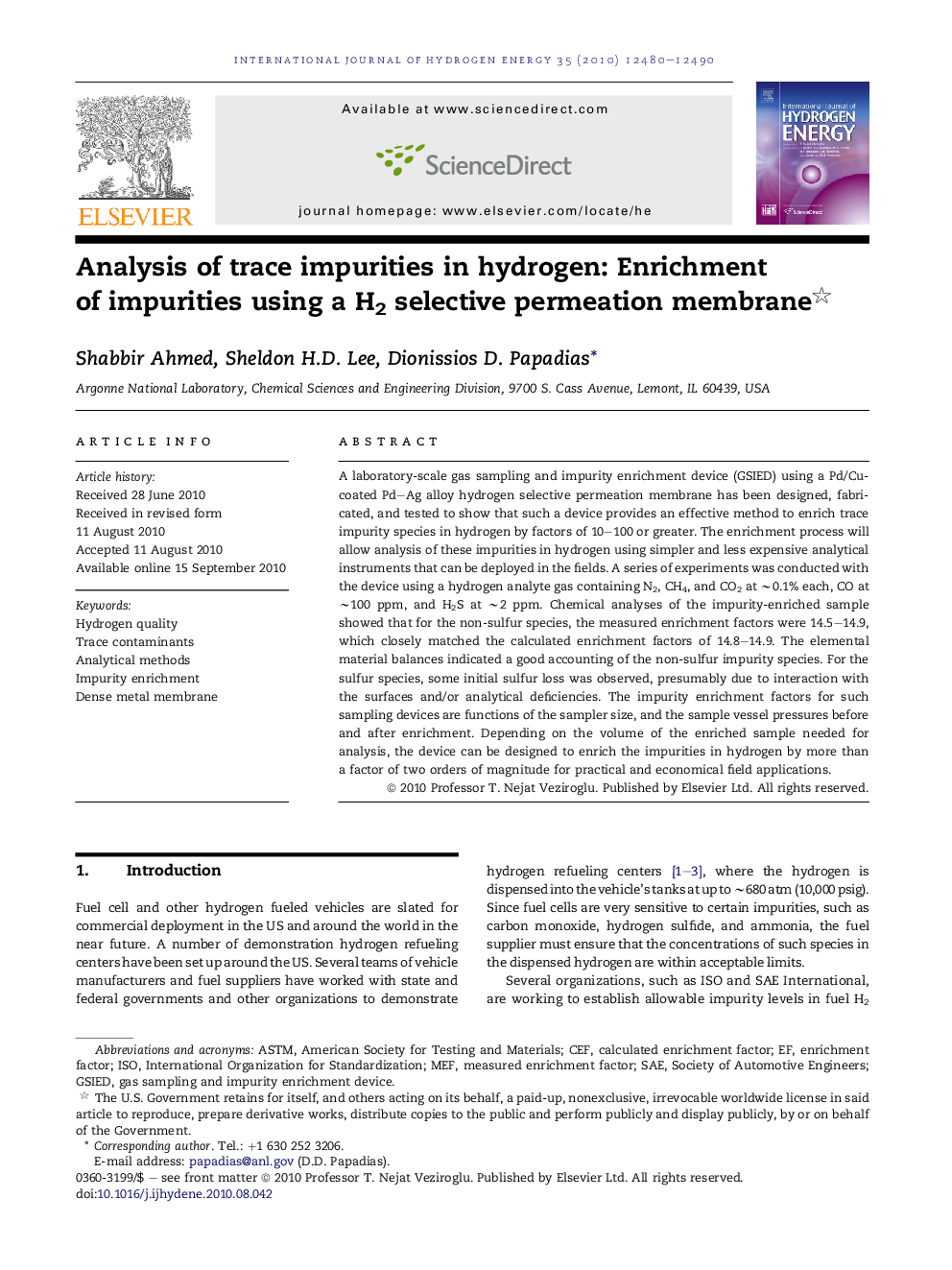| Article ID | Journal | Published Year | Pages | File Type |
|---|---|---|---|---|
| 1282760 | International Journal of Hydrogen Energy | 2010 | 11 Pages |
A laboratory-scale gas sampling and impurity enrichment device (GSIED) using a Pd/Cu-coated Pd–Ag alloy hydrogen selective permeation membrane has been designed, fabricated, and tested to show that such a device provides an effective method to enrich trace impurity species in hydrogen by factors of 10–100 or greater. The enrichment process will allow analysis of these impurities in hydrogen using simpler and less expensive analytical instruments that can be deployed in the fields. A series of experiments was conducted with the device using a hydrogen analyte gas containing N2, CH4, and CO2 at ∼0.1% each, CO at ∼100 ppm, and H2S at ∼2 ppm. Chemical analyses of the impurity-enriched sample showed that for the non-sulfur species, the measured enrichment factors were 14.5–14.9, which closely matched the calculated enrichment factors of 14.8–14.9. The elemental material balances indicated a good accounting of the non-sulfur impurity species. For the sulfur species, some initial sulfur loss was observed, presumably due to interaction with the surfaces and/or analytical deficiencies. The impurity enrichment factors for such sampling devices are functions of the sampler size, and the sample vessel pressures before and after enrichment. Depending on the volume of the enriched sample needed for analysis, the device can be designed to enrich the impurities in hydrogen by more than a factor of two orders of magnitude for practical and economical field applications.
